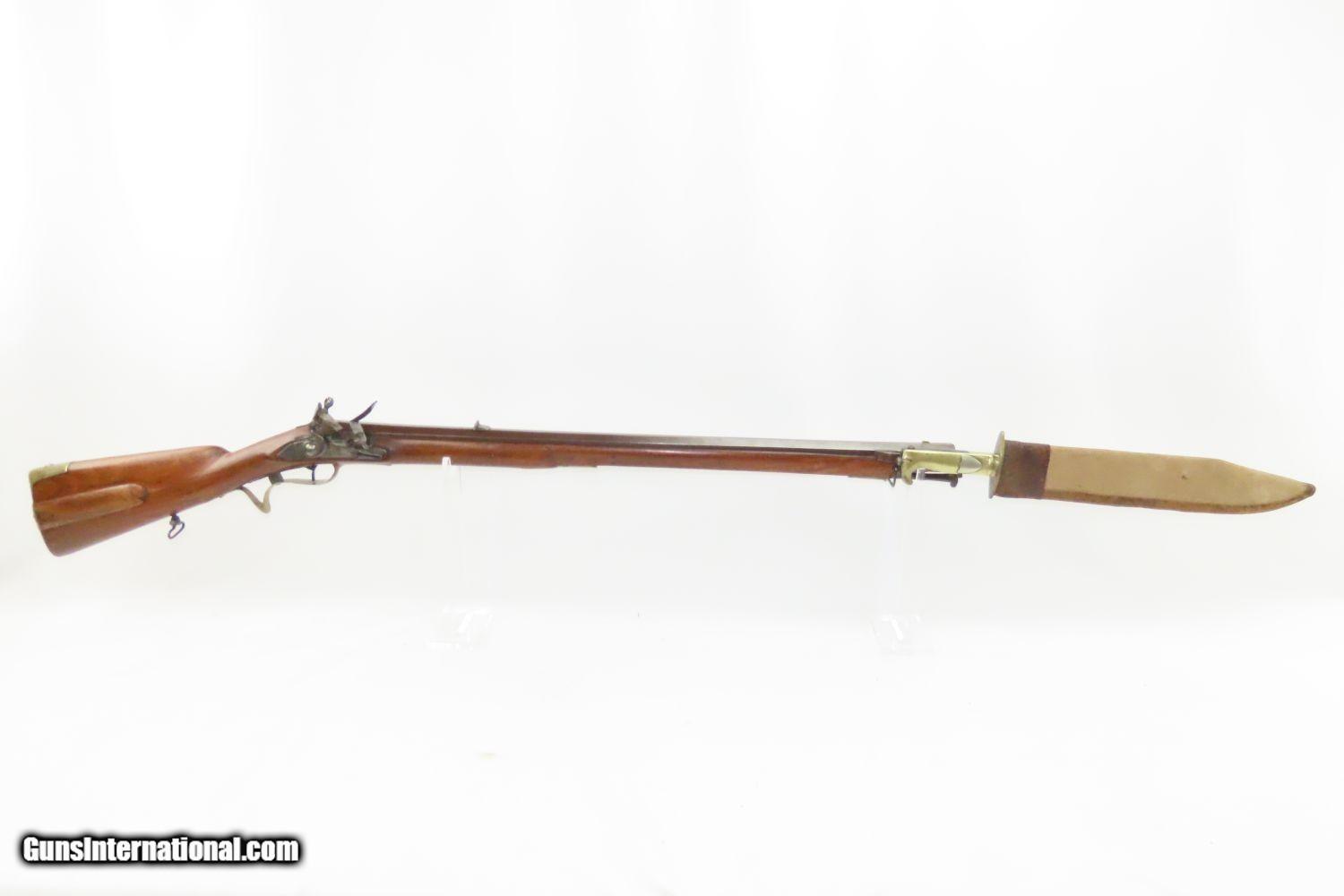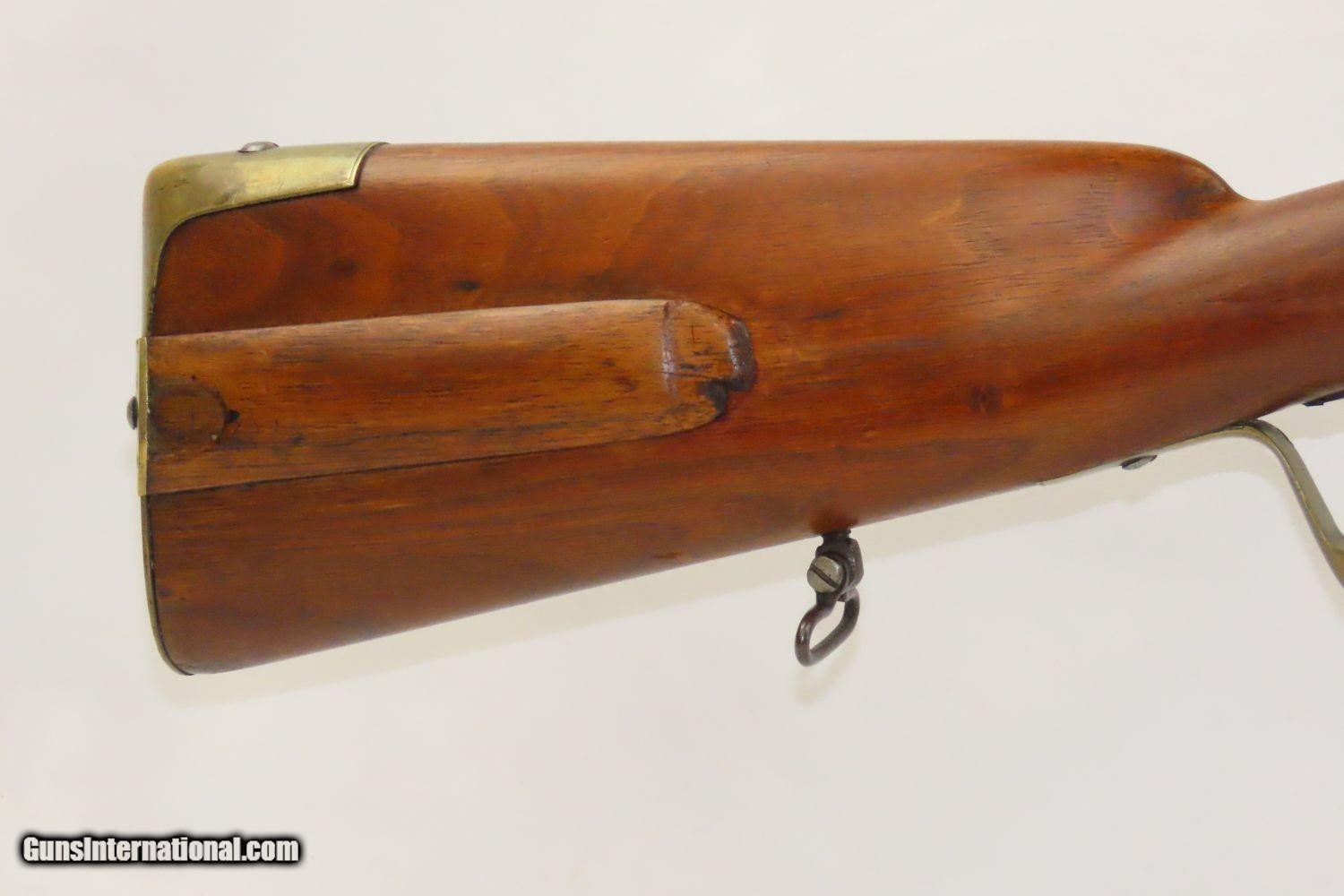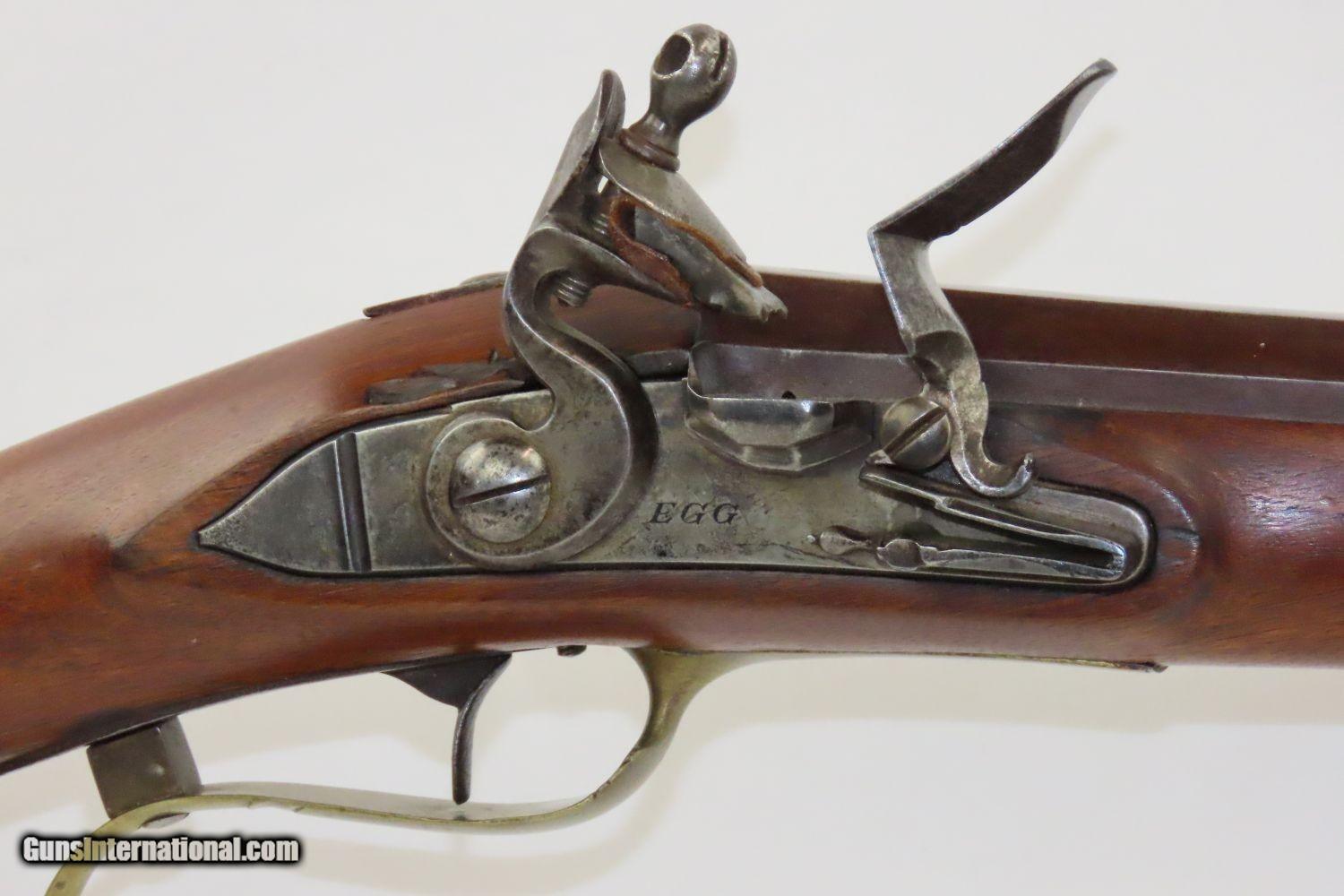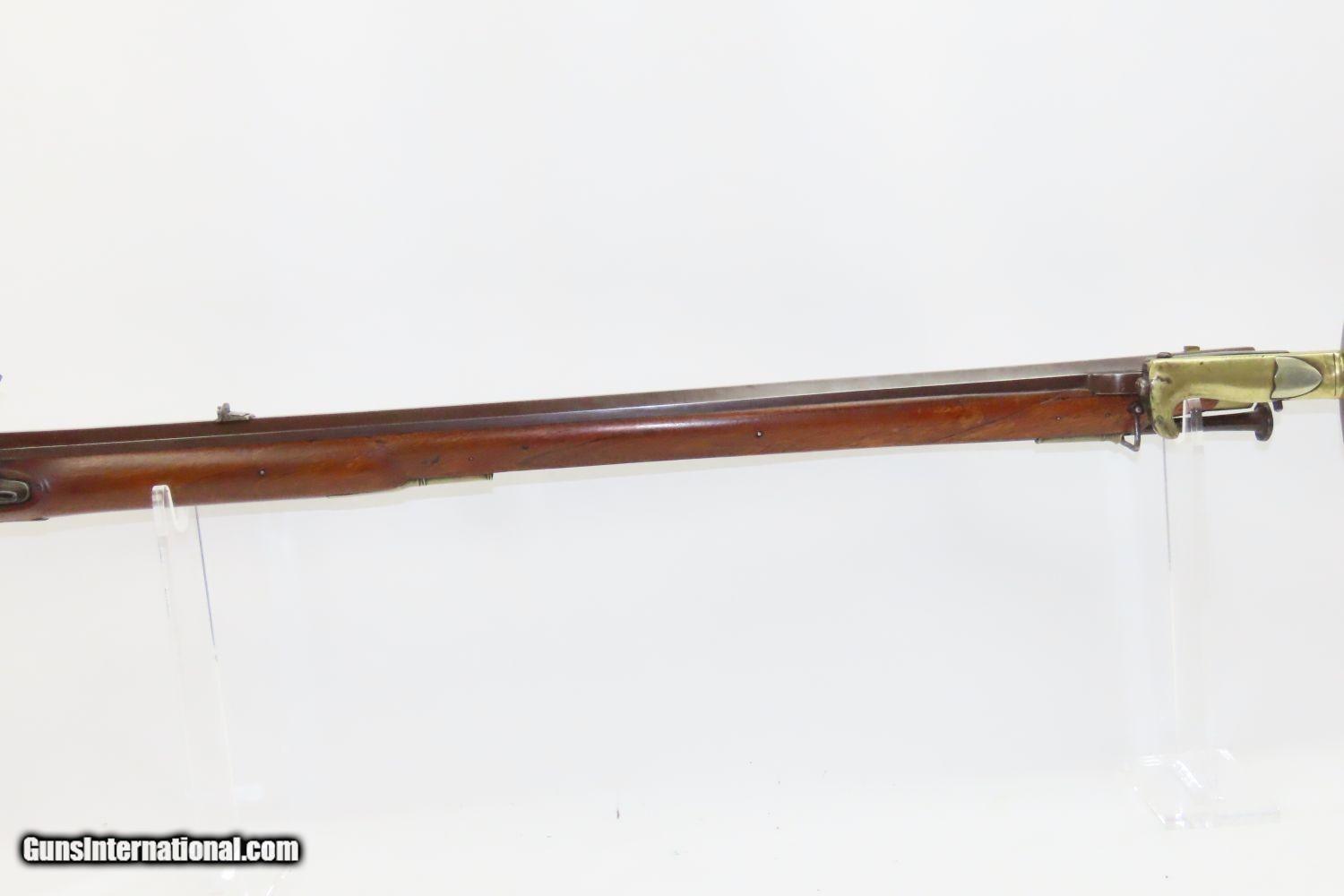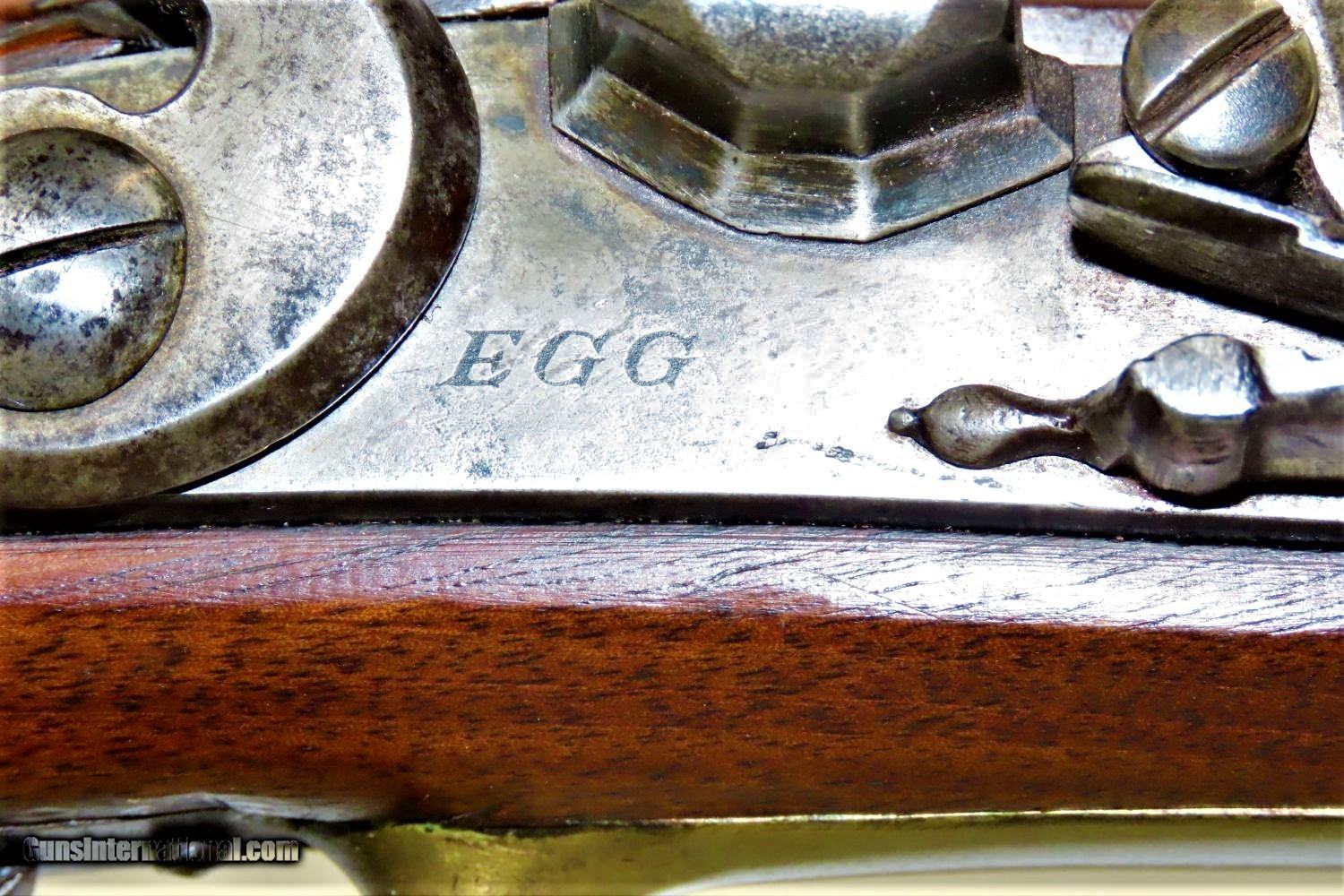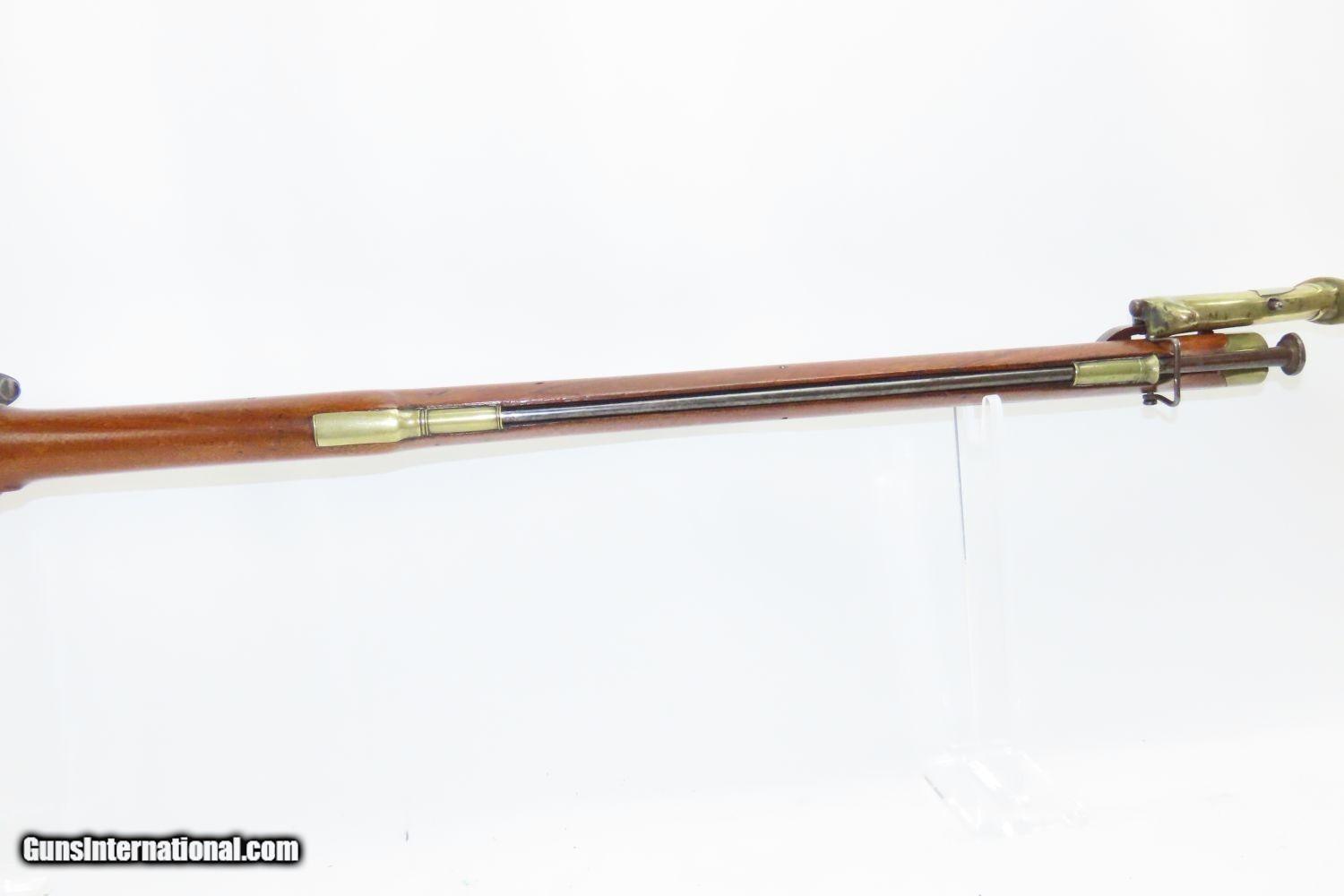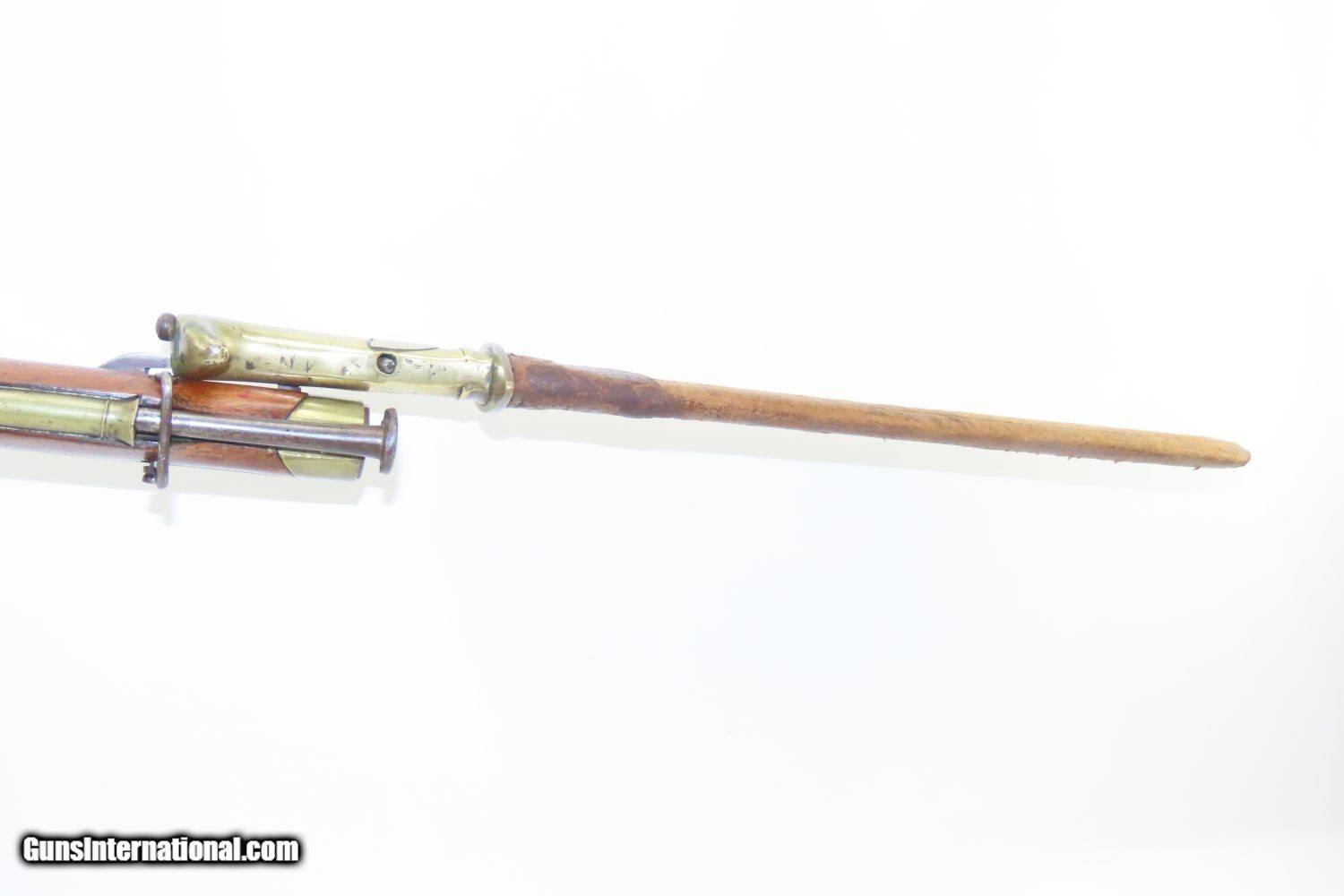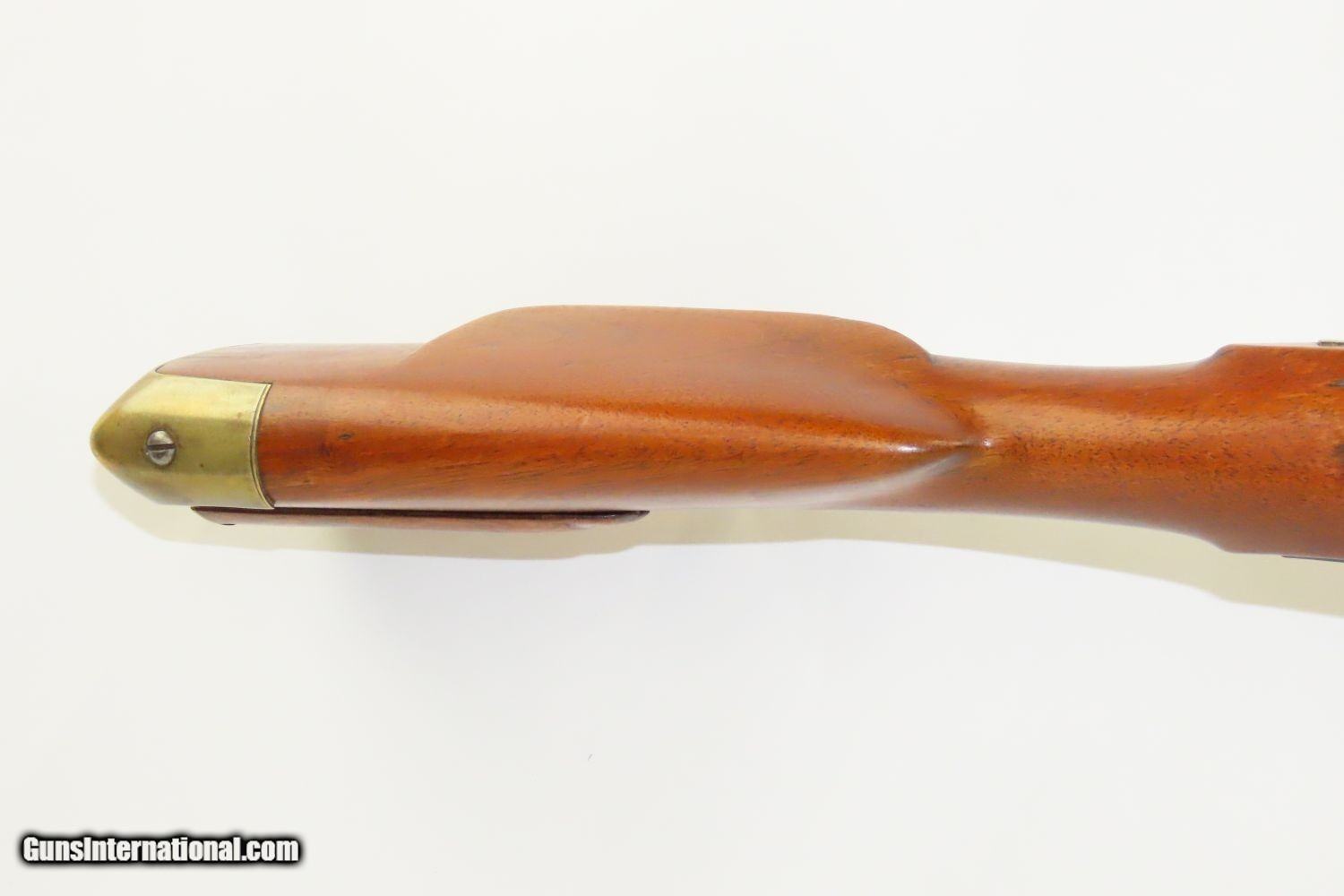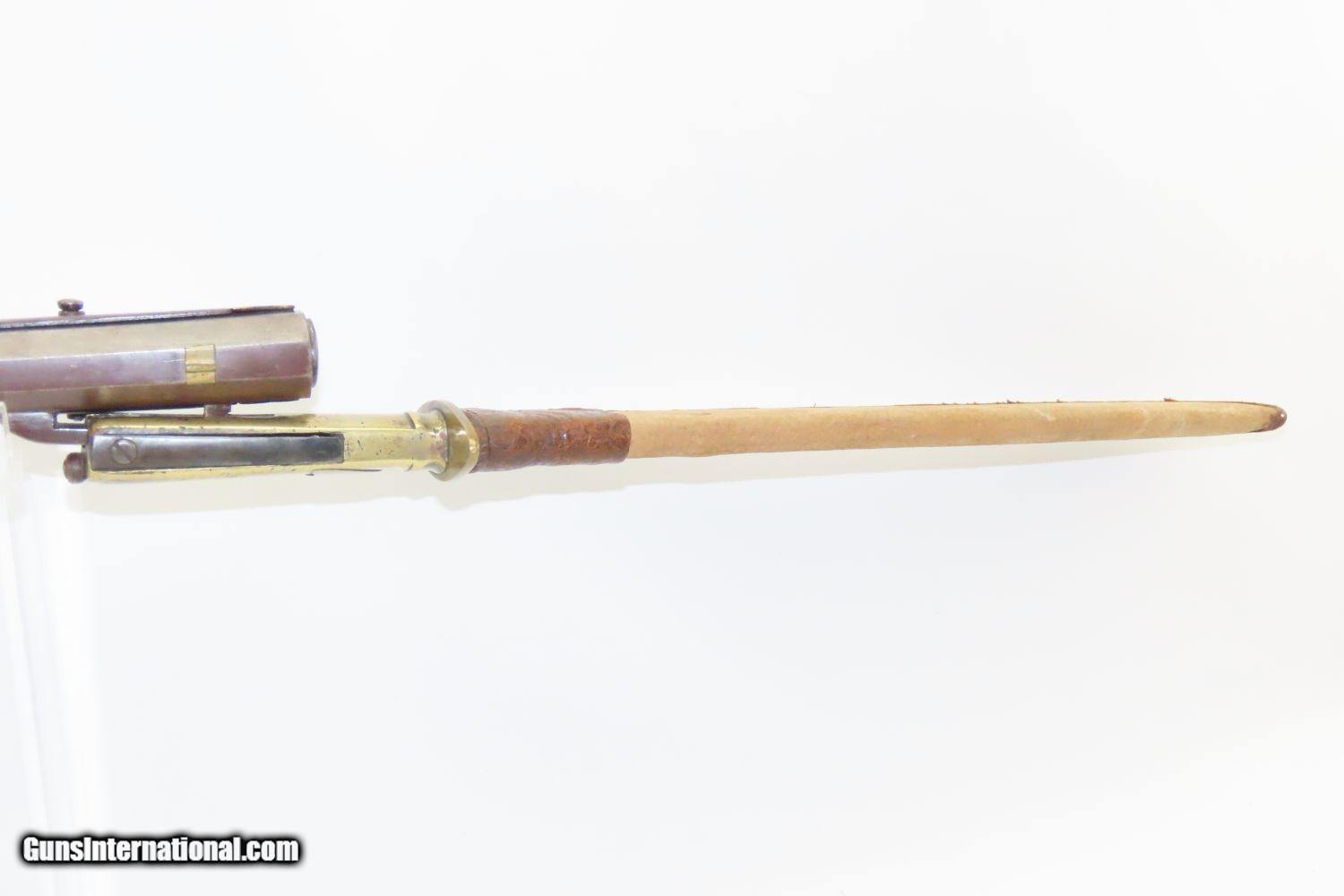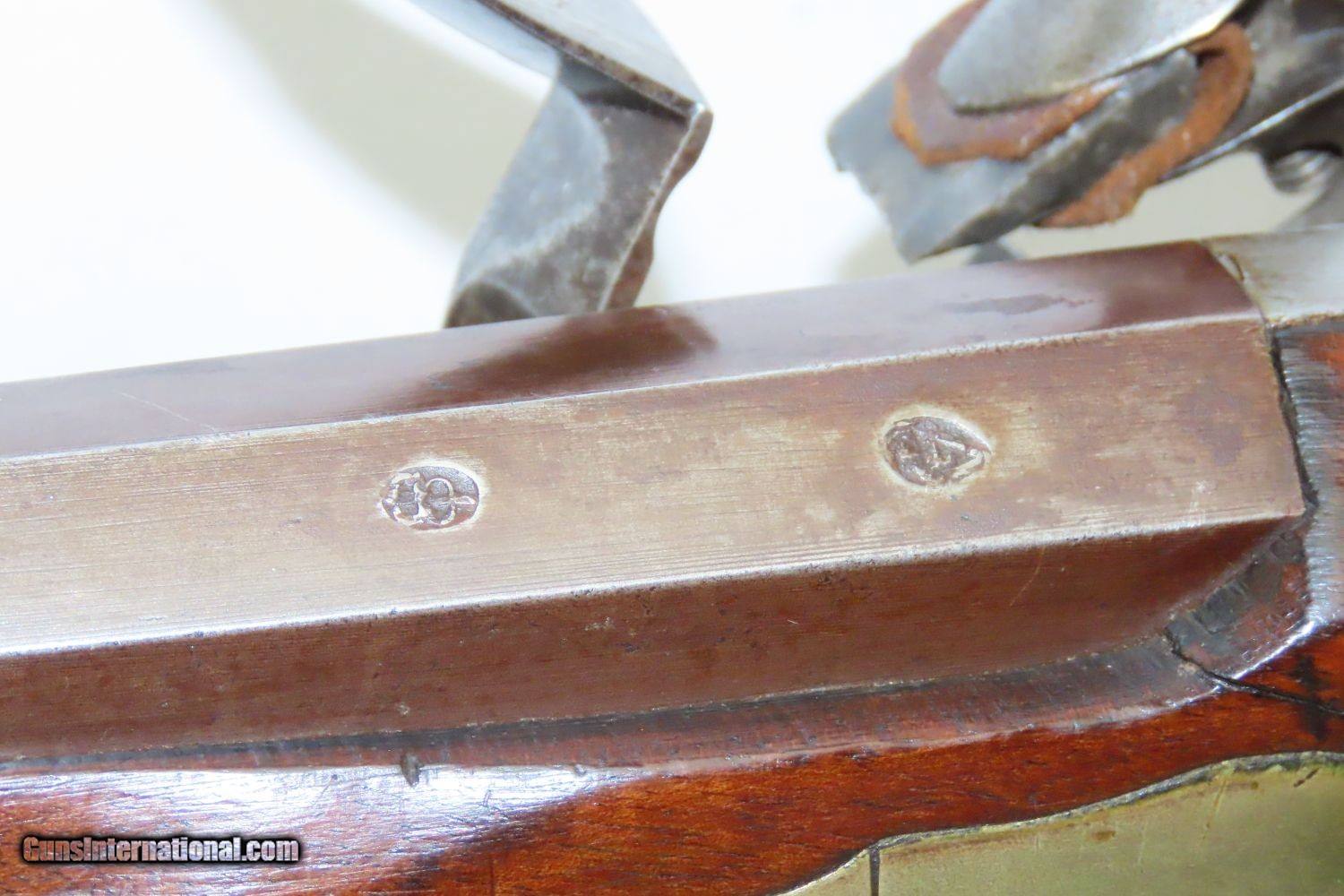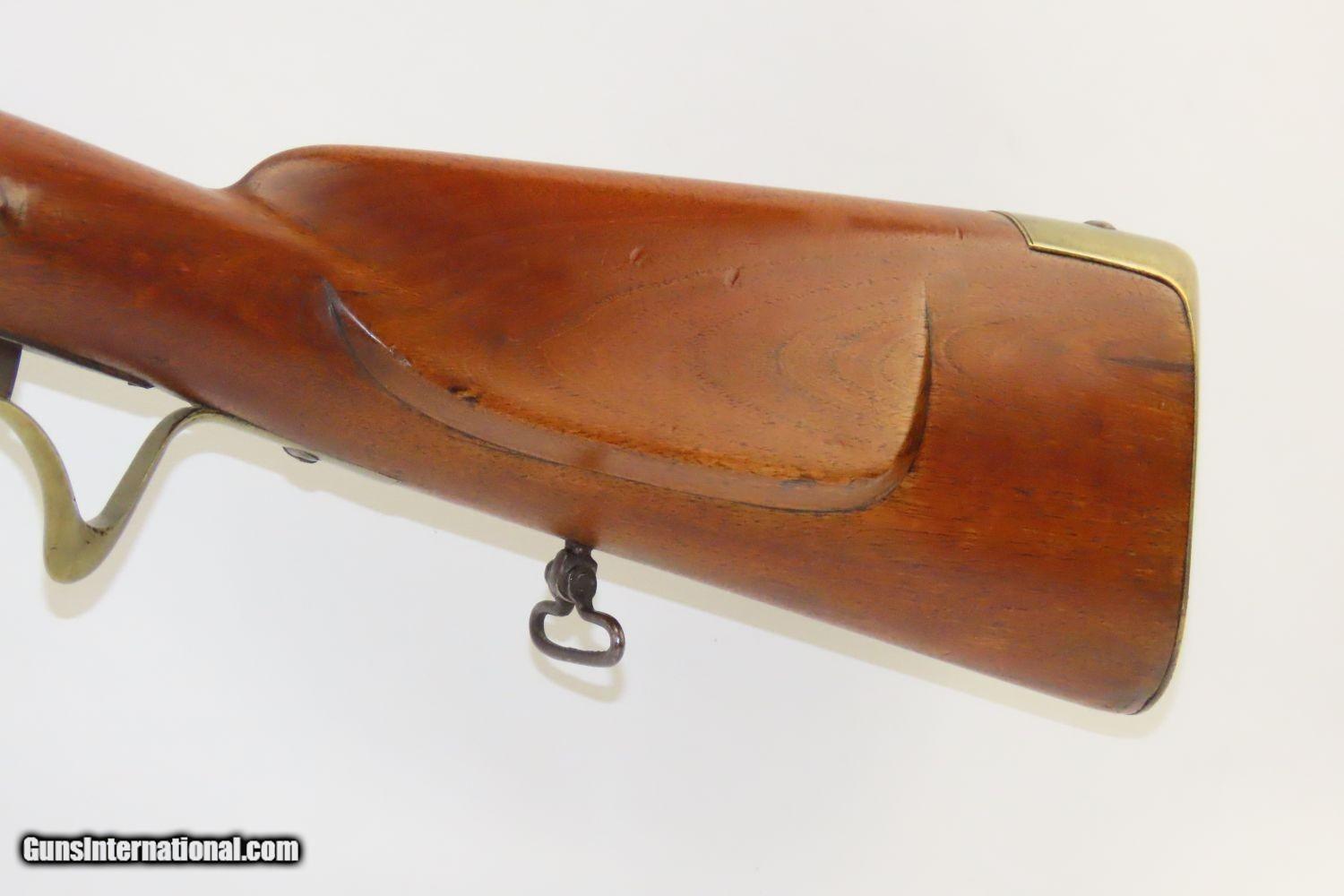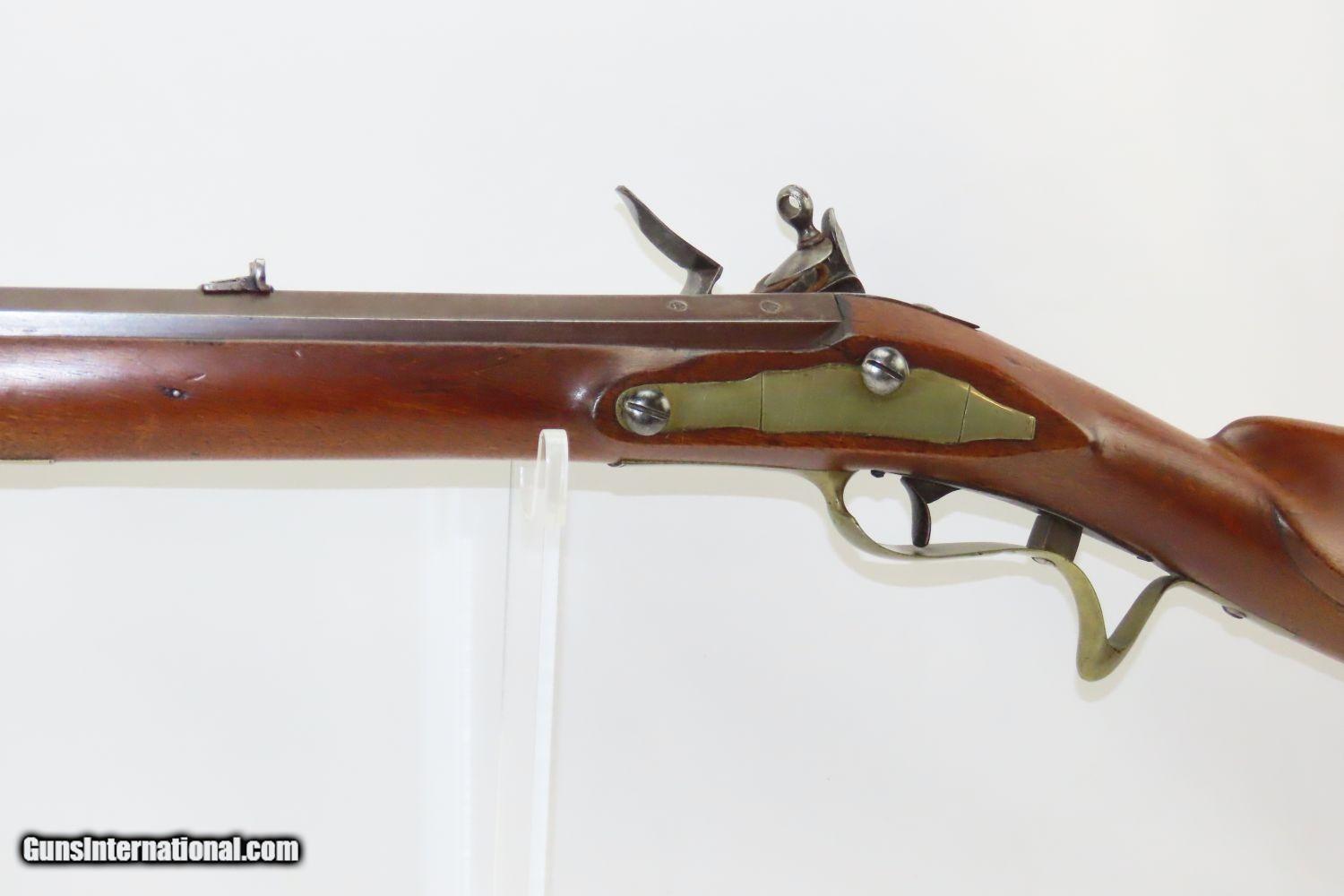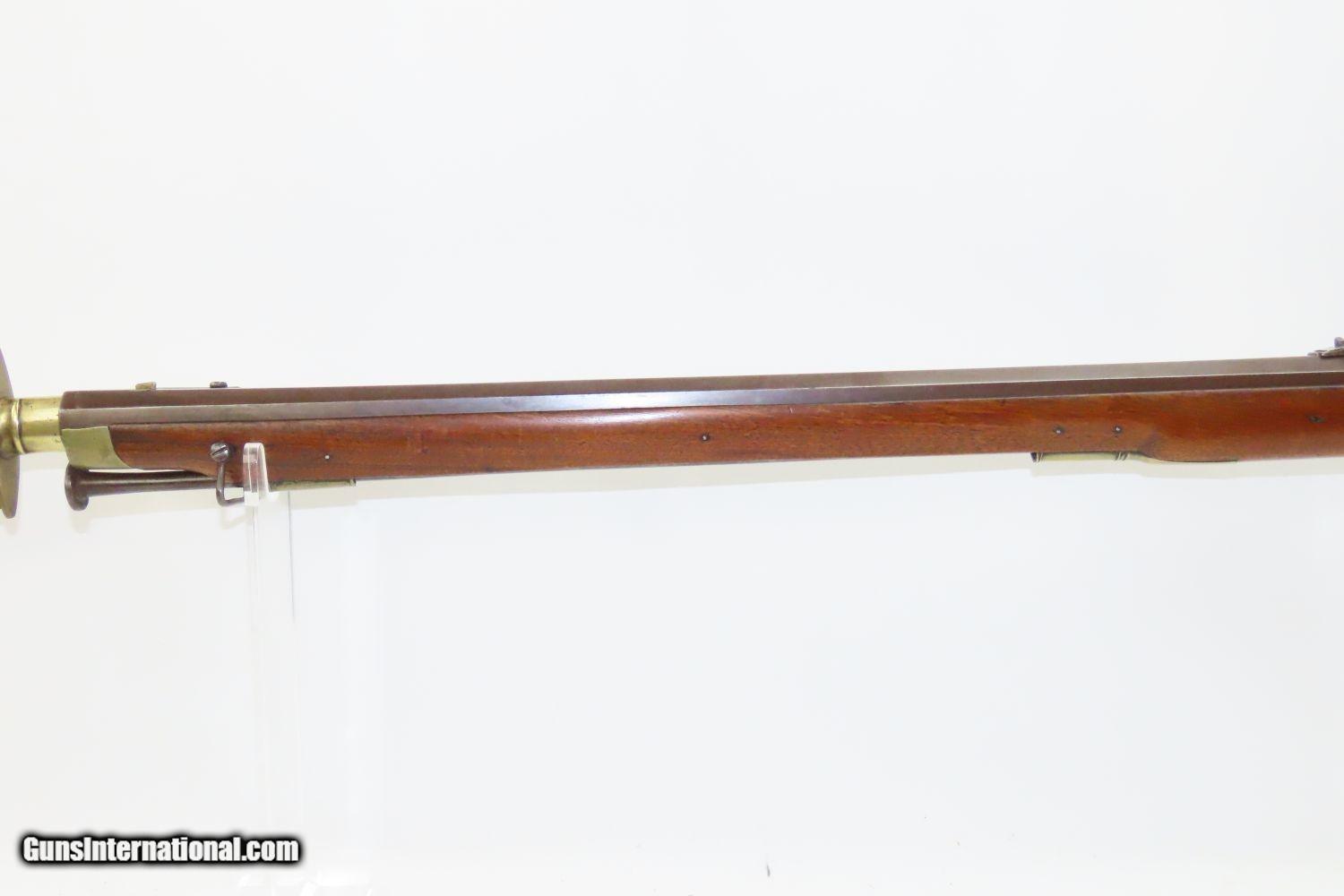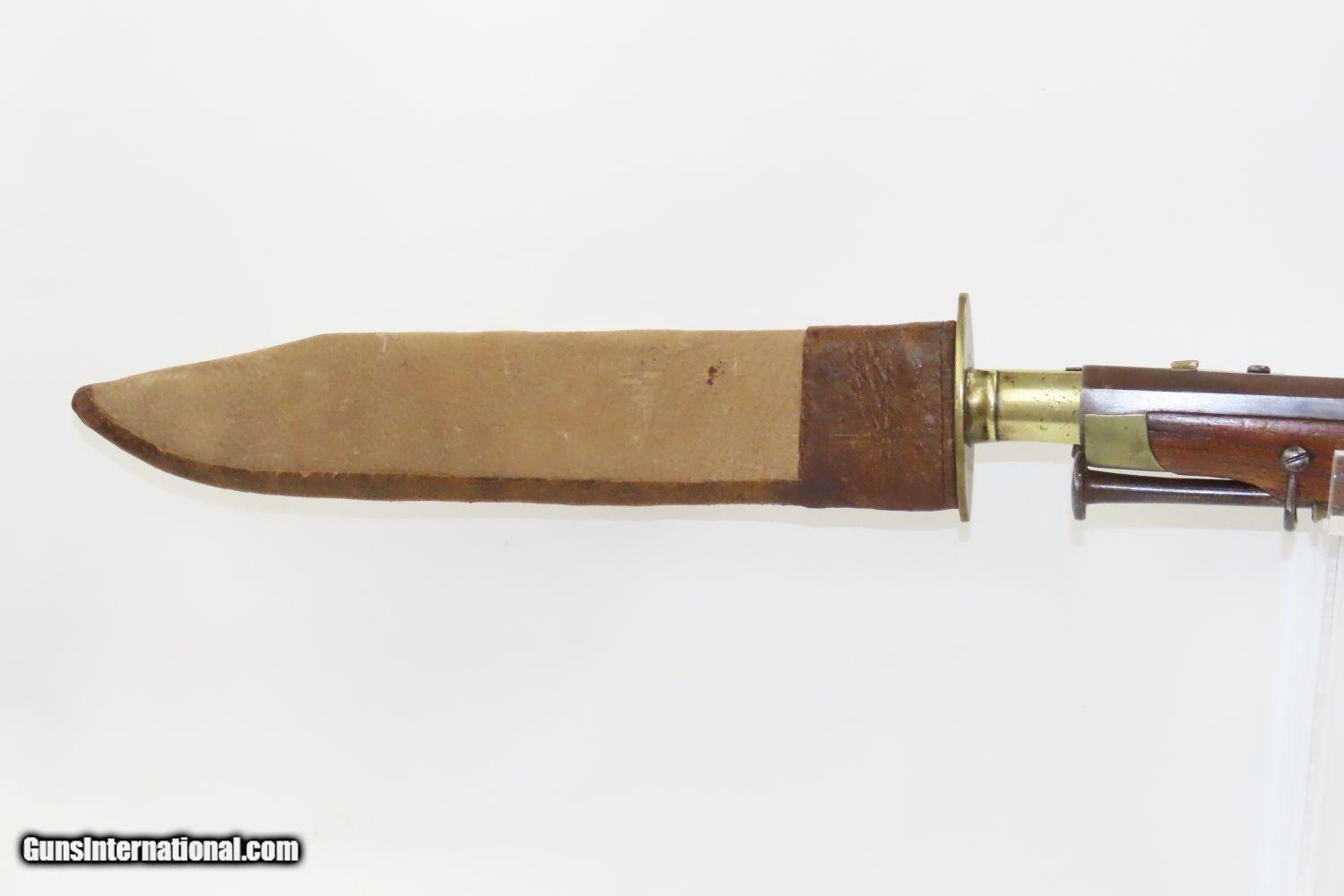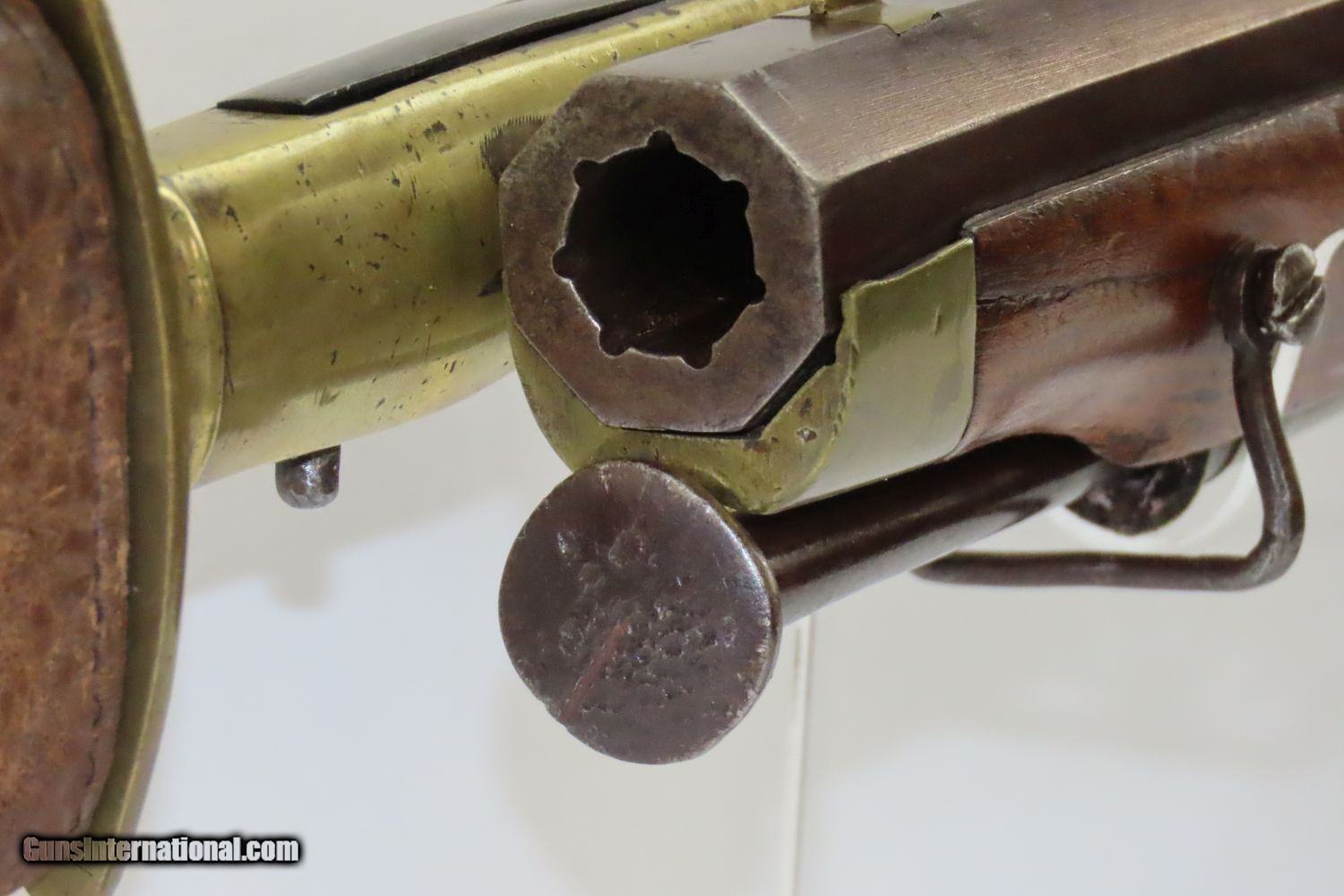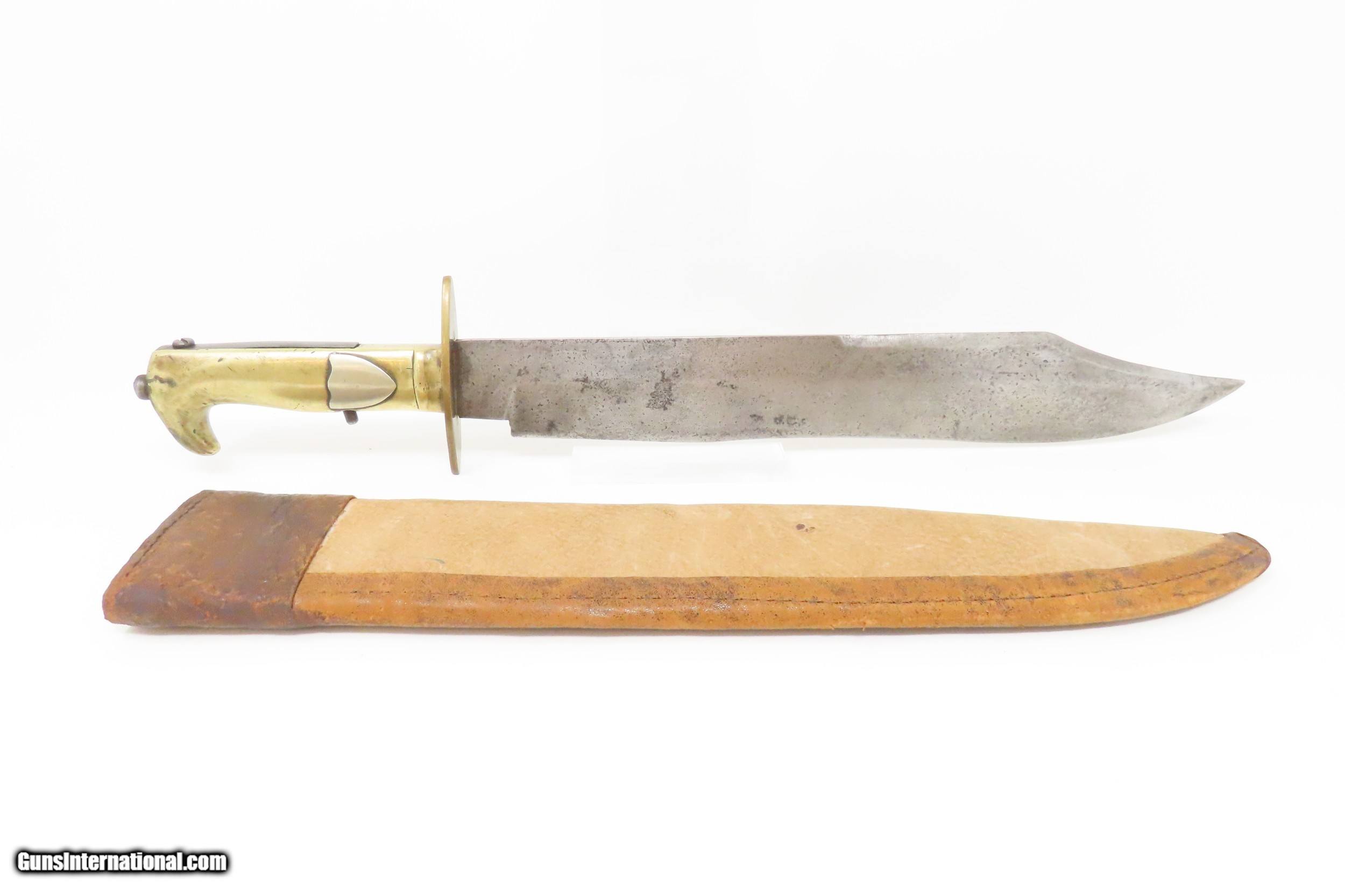Your Session is Ending
 The server has not detected any activity for the last 3 hours.
For your security, your session will expire in 2 minutes and you will be redirected to the Sign In page.
Would you like to stay signed in?
The server has not detected any activity for the last 3 hours.
For your security, your session will expire in 2 minutes and you will be redirected to the Sign In page.
Would you like to stay signed in?
BRITISH Antique DURS EGG FLINTLOCK Germanic JAEGER Rifle Corps .60 Caliber Late -18th Century British Jager Troop Style Military Rifle
BRITISH Antique DURS EGG FLINTLOCK Germanic JAEGER Rifle Corps .60 Caliber Late -18th Century British Jager Troop Style Military Rifle
Guns International #: 101594382
Seller's Inventory #: 200889
Category - Antique Rifles - 1500-1850
- Antique Rifles - Flintlock
Seller's Information
When emailing or calling sellers direct,
please mention that you saw their listing on GunsInternational.com
Seller: AncestryGunsLLC
Company: Ancestry Guns LLC
Company: Ancestry Guns LLC
Member Since: 11/3/16
State:
Missouri
Zip: 65203
Country: United States
Phone:
(314) 707-7373
Int'l Phone:
314-707-7373
Platinum Seller
Active Listings: 1232
Total Listings: 35609
Seller Type: FFL Dealer
Return Policy: 3 day inspection and return policy on used guns and accessories.
Payment Methods: Credit Card, Certified Check, Money Order
BRITISH Antique DURS EGG FLINTLOCK Germanic JAEGER Rifle Corps .60 Caliber Late -18th Century British Jager Troop Style Military Rifle
Description:
BRITISH Antique DURS EGG FLINTLOCK Germanic JAEGER Rifle Corps .60 Caliber
Late -18th Century British Jager Troop Style Military Rifle
Here we present an antique British Flintlock Jaeger Rifle by Durs Egg, made circa the late-18th Century in London, England. Durs Egg (1748-1831) was a Swiss-born British gunmaker, known for high quality flintlock firearms. He was born in Basle, Switzerland and apprenticed in Solothurn before working in Paris and finally establishing his business in London in 1772. Egg was not simply a maker, but an innovator and inventor who held multiple patents. He was active in pioneering rifles and early breechloaders for military applications, such as being a maker of the Ferguson rifle.
Up to this point, the British military had used smooth bored muskets almost exclusively for their infantry. However, times changed, and the Board of Ordnance was once again looking for a suitable rifle to field. This would prove to be a transitionary period for military arms, though the transition would take decades. Cues for experimental rifles were taken primarily from central Europe, namely what we now consider Germany, as use of the rifle there proved highly effective. Specifically, units of German rifle units were established from men who were typically experienced hunters, who already had accurate personal weapons and who could use them with expertise. These were no conscripts who barely knew how to load their muskets, but rather those who were proficient before any military training and who would also have been skilled in the areas of tracking and scouting. The rifles were distinct in their form, function and aesthetic. They were typically relatively short, with full-length stocks, octagonal barrels, a sliding wooden patch box on one side with a generous cheek rest on the other, and sling swivels. As a result, the British produced rather Germanic-looking rifles. These were short overall and had smaller bores (.60-.70 caliber) and 7-groove rifling. This piece meets all that criteria, is well-balanced, and has the addition of a large bayonet lug on the right side. The rear sight has a stationary notch sight with a hinged flip-up longer distance leaf. The ramrod is of iron with a wide, flat end for lots of surface area to ram the ball down the rifling. The small end of the ramrod is able to accept several different attachments, such as a worm, which are stored in the patch box along with some old patches. The butt plate, trigger guard, side plate, and muzzle cap are of brass. The left side of the barrel has 1740-style proofs with crown “V” and crown “CP” in sunken ovals. The bayonet in this instance is a large “Bowie” type, with a long clip-point, brass hilt with a shield-shaped German silver ornament, and spring-loaded, button-type release. The blade is marked “[F]ENTONANDSHORE/SHEFFIELD”.
Rifles such as these were utilized during the Revolutionary War by some of the Hessian troops that fought on behalf of the British. British regulars were surprised to see these foreign troops with rifles equipped with bayonets. Whether this rifle was used during the conflict with the colonists or not, by the time of the Napoleonic Wars, other such rifles were in use by corps of British riflemen. They were not adopted on a mass scale, but the concept could not be overlooked. This rifle may have been a one-off trial or custom order, or it could have been part of a small order for some volunteers. The blade seems to be later than the rifle and it is likely that the original bayonet was lost and a new one was custom fashioned with the Bowie, which was just becoming fashionable. While it does add significant weight to the front of the rifle, it would have been a much more useful, all-around tool than a simple spike. A very fitting tool for a special unit rifleman.
The overall condition is near fine. The action is excellent. The bore is bright and clean. The barrel has a browned finish. There are a few stable cracks along the grain toward the muzzle, otherwise the stock is smooth and solid. This is a one of a kind Jaeger by Egg with an impressive Bowie bayonet!
Own the original! This is a legitimate antique and not a reproduction.
Barrel is 29 inches.
Caliber: .60
Overall condition as seen in photos.
Very Fast. Very Safe. FREE SHIPPING WORLDWIDE. Delivered directly to your door by express mail!
Guaranteed AUTHENTIC & Includes CERTIFICATE OF AUTHENTICITY.
ancestryguns
$11,350
#200889
SOLD
Antique: Yes
Description:
BRITISH Antique DURS EGG FLINTLOCK Germanic JAEGER Rifle Corps .60 Caliber
Late -18th Century British Jager Troop Style Military Rifle
Here we present an antique British Flintlock Jaeger Rifle by Durs Egg, made circa the late-18th Century in London, England. Durs Egg (1748-1831) was a Swiss-born British gunmaker, known for high quality flintlock firearms. He was born in Basle, Switzerland and apprenticed in Solothurn before working in Paris and finally establishing his business in London in 1772. Egg was not simply a maker, but an innovator and inventor who held multiple patents. He was active in pioneering rifles and early breechloaders for military applications, such as being a maker of the Ferguson rifle.
Up to this point, the British military had used smooth bored muskets almost exclusively for their infantry. However, times changed, and the Board of Ordnance was once again looking for a suitable rifle to field. This would prove to be a transitionary period for military arms, though the transition would take decades. Cues for experimental rifles were taken primarily from central Europe, namely what we now consider Germany, as use of the rifle there proved highly effective. Specifically, units of German rifle units were established from men who were typically experienced hunters, who already had accurate personal weapons and who could use them with expertise. These were no conscripts who barely knew how to load their muskets, but rather those who were proficient before any military training and who would also have been skilled in the areas of tracking and scouting. The rifles were distinct in their form, function and aesthetic. They were typically relatively short, with full-length stocks, octagonal barrels, a sliding wooden patch box on one side with a generous cheek rest on the other, and sling swivels. As a result, the British produced rather Germanic-looking rifles. These were short overall and had smaller bores (.60-.70 caliber) and 7-groove rifling. This piece meets all that criteria, is well-balanced, and has the addition of a large bayonet lug on the right side. The rear sight has a stationary notch sight with a hinged flip-up longer distance leaf. The ramrod is of iron with a wide, flat end for lots of surface area to ram the ball down the rifling. The small end of the ramrod is able to accept several different attachments, such as a worm, which are stored in the patch box along with some old patches. The butt plate, trigger guard, side plate, and muzzle cap are of brass. The left side of the barrel has 1740-style proofs with crown “V” and crown “CP” in sunken ovals. The bayonet in this instance is a large “Bowie” type, with a long clip-point, brass hilt with a shield-shaped German silver ornament, and spring-loaded, button-type release. The blade is marked “[F]ENTONANDSHORE/SHEFFIELD”.
Rifles such as these were utilized during the Revolutionary War by some of the Hessian troops that fought on behalf of the British. British regulars were surprised to see these foreign troops with rifles equipped with bayonets. Whether this rifle was used during the conflict with the colonists or not, by the time of the Napoleonic Wars, other such rifles were in use by corps of British riflemen. They were not adopted on a mass scale, but the concept could not be overlooked. This rifle may have been a one-off trial or custom order, or it could have been part of a small order for some volunteers. The blade seems to be later than the rifle and it is likely that the original bayonet was lost and a new one was custom fashioned with the Bowie, which was just becoming fashionable. While it does add significant weight to the front of the rifle, it would have been a much more useful, all-around tool than a simple spike. A very fitting tool for a special unit rifleman.
The overall condition is near fine. The action is excellent. The bore is bright and clean. The barrel has a browned finish. There are a few stable cracks along the grain toward the muzzle, otherwise the stock is smooth and solid. This is a one of a kind Jaeger by Egg with an impressive Bowie bayonet!
Own the original! This is a legitimate antique and not a reproduction.
Barrel is 29 inches.
Caliber: .60
Overall condition as seen in photos.
Very Fast. Very Safe. FREE SHIPPING WORLDWIDE. Delivered directly to your door by express mail!
Guaranteed AUTHENTIC & Includes CERTIFICATE OF AUTHENTICITY.
ancestryguns
$11,350
#200889
SOLD
Antique: Yes
Click Photo to Enlarge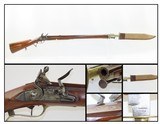
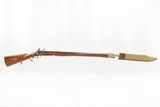
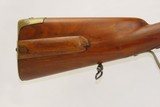
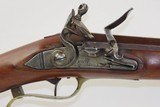
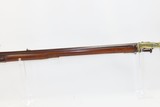
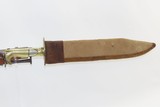
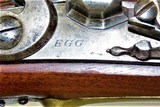
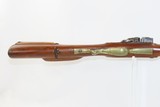
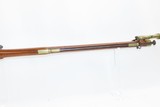
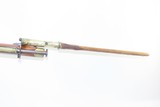
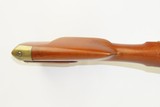

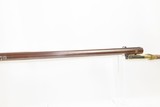
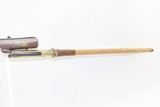
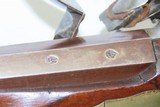

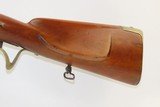
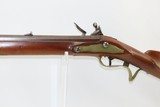
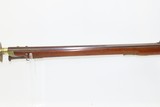

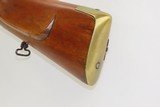
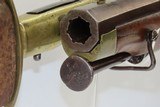
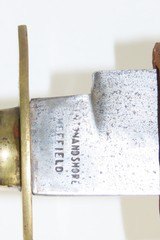
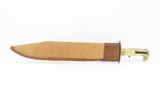
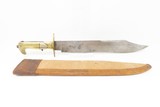
|
Guns International #: 101594382
Category - Antique Rifles - 1500-1850
- Antique Rifles - Flintlock
Seller's Information
When emailing or calling sellers direct,
please mention that you saw their listing on GunsInternational.com
Seller: AncestryGunsLLC
Company: Ancestry Guns LLC Member Since: 11/3/16
State:
Missouri
Zip: 65203
Country: United States
Phone:
(314) 707-7373
Int'l Phone:
314-707-7373
Platinum Seller
Active Listings: 1232
Total Listings: 35609
Seller Type: FFL Dealer
Return Policy: 3 day inspection and return policy on used guns and accessories.
Payment Methods: Credit Card, Certified Check, Money Order
BRITISH Antique DURS EGG FLINTLOCK Germanic JAEGER Rifle Corps .60 Caliber Late -18th Century British Jager Troop Style Military Rifle
Description: BRITISH Antique DURS EGG FLINTLOCK Germanic JAEGER Rifle Corps .60 Caliber Late -18th Century British Jager Troop Style Military Rifle Here we present an antique British Flintlock Jaeger Rifle by Durs Egg, made circa the late-18th Century in London, England. Durs Egg (1748-1831) was a Swiss-born British gunmaker, known for high quality flintlock firearms. He was born in Basle, Switzerland and apprenticed in Solothurn before working in Paris and finally establishing his business in London in 1772. Egg was not simply a maker, but an innovator and inventor who held multiple patents. He was active in pioneering rifles and early breechloaders for military applications, such as being a maker of the Ferguson rifle. Up to this point, the British military had used smooth bored muskets almost exclusively for their infantry. However, times changed, and the Board of Ordnance was once again looking for a suitable rifle to field. This would prove to be a transitionary period for military arms, though the transition would take decades. Cues for experimental rifles were taken primarily from central Europe, namely what we now consider Germany, as use of the rifle there proved highly effective. Specifically, units of German rifle units were established from men who were typically experienced hunters, who already had accurate personal weapons and who could use them with expertise. These were no conscripts who barely knew how to load their muskets, but rather those who were proficient before any military training and who would also have been skilled in the areas of tracking and scouting. The rifles were distinct in their form, function and aesthetic. They were typically relatively short, with full-length stocks, octagonal barrels, a sliding wooden patch box on one side with a generous cheek rest on the other, and sling swivels. As a result, the British produced rather Germanic-looking rifles. These were short overall and had smaller bores (.60-.70 caliber) and 7-groove rifling. This piece meets all that criteria, is well-balanced, and has the addition of a large bayonet lug on the right side. The rear sight has a stationary notch sight with a hinged flip-up longer distance leaf. The ramrod is of iron with a wide, flat end for lots of surface area to ram the ball down the rifling. The small end of the ramrod is able to accept several different attachments, such as a worm, which are stored in the patch box along with some old patches. The butt plate, trigger guard, side plate, and muzzle cap are of brass. The left side of the barrel has 1740-style proofs with crown “V” and crown “CP” in sunken ovals. The bayonet in this instance is a large “Bowie” type, with a long clip-point, brass hilt with a shield-shaped German silver ornament, and spring-loaded, button-type release. The blade is marked “[F]ENTONANDSHORE/SHEFFIELD”. Rifles such as these were utilized during the Revolutionary War by some of the Hessian troops that fought on behalf of the British. British regulars were surprised to see these foreign troops with rifles equipped with bayonets. Whether this rifle was used during the conflict with the colonists or not, by the time of the Napoleonic Wars, other such rifles were in use by corps of British riflemen. They were not adopted on a mass scale, but the concept could not be overlooked. This rifle may have been a one-off trial or custom order, or it could have been part of a small order for some volunteers. The blade seems to be later than the rifle and it is likely that the original bayonet was lost and a new one was custom fashioned with the Bowie, which was just becoming fashionable. While it does add significant weight to the front of the rifle, it would have been a much more useful, all-around tool than a simple spike. A very fitting tool for a special unit rifleman. The overall condition is near fine. The action is excellent. The bore is bright and clean. The barrel has a browned finish. There are a few stable cracks along the grain toward the muzzle, otherwise the stock is smooth and solid. This is a one of a kind Jaeger by Egg with an impressive Bowie bayonet! Own the original! This is a legitimate antique and not a reproduction. Barrel is 29 inches. Caliber: .60 Overall condition as seen in photos. Very Fast. Very Safe. FREE SHIPPING WORLDWIDE. Delivered directly to your door by express mail! Guaranteed AUTHENTIC & Includes CERTIFICATE OF AUTHENTICITY. ancestryguns $11,350 #200889 SOLD Antique: Yes |
Guns International #: 101594382
Seller's Inventory #: 200889
Category - Antique Rifles - 1500-1850
- Antique Rifles - Flintlock
Seller's Information
When emailing or calling sellers direct,
please mention that you saw their listing on GunsInternational.com
Seller: AncestryGunsLLC
Company: Ancestry Guns LLC
Company: Ancestry Guns LLC
Member Since: 11/3/16
State:
Missouri
Zip: 65203
Country: United States
Phone:
(314) 707-7373
Int'l Phone:
314-707-7373
Platinum Seller
Active Listings: 1232
Total Listings: 35609
Seller Type: FFL Dealer
Return Policy: 3 day inspection and return policy on used guns and accessories.
Payment Methods: Credit Card, Certified Check, Money Order
BRITISH Antique DURS EGG FLINTLOCK Germanic JAEGER Rifle Corps .60 Caliber Late -18th Century British Jager Troop Style Military Rifle
Description:
BRITISH Antique DURS EGG FLINTLOCK Germanic JAEGER Rifle Corps .60 Caliber
Late -18th Century British Jager Troop Style Military Rifle
Here we present an antique British Flintlock Jaeger Rifle by Durs Egg, made circa the late-18th Century in London, England. Durs Egg (1748-1831) was a Swiss-born British gunmaker, known for high quality flintlock firearms. He was born in Basle, Switzerland and apprenticed in Solothurn before working in Paris and finally establishing his business in London in 1772. Egg was not simply a maker, but an innovator and inventor who held multiple patents. He was active in pioneering rifles and early breechloaders for military applications, such as being a maker of the Ferguson rifle.
Up to this point, the British military had used smooth bored muskets almost exclusively for their infantry. However, times changed, and the Board of Ordnance was once again looking for a suitable rifle to field. This would prove to be a transitionary period for military arms, though the transition would take decades. Cues for experimental rifles were taken primarily from central Europe, namely what we now consider Germany, as use of the rifle there proved highly effective. Specifically, units of German rifle units were established from men who were typically experienced hunters, who already had accurate personal weapons and who could use them with expertise. These were no conscripts who barely knew how to load their muskets, but rather those who were proficient before any military training and who would also have been skilled in the areas of tracking and scouting. The rifles were distinct in their form, function and aesthetic. They were typically relatively short, with full-length stocks, octagonal barrels, a sliding wooden patch box on one side with a generous cheek rest on the other, and sling swivels. As a result, the British produced rather Germanic-looking rifles. These were short overall and had smaller bores (.60-.70 caliber) and 7-groove rifling. This piece meets all that criteria, is well-balanced, and has the addition of a large bayonet lug on the right side. The rear sight has a stationary notch sight with a hinged flip-up longer distance leaf. The ramrod is of iron with a wide, flat end for lots of surface area to ram the ball down the rifling. The small end of the ramrod is able to accept several different attachments, such as a worm, which are stored in the patch box along with some old patches. The butt plate, trigger guard, side plate, and muzzle cap are of brass. The left side of the barrel has 1740-style proofs with crown “V” and crown “CP” in sunken ovals. The bayonet in this instance is a large “Bowie” type, with a long clip-point, brass hilt with a shield-shaped German silver ornament, and spring-loaded, button-type release. The blade is marked “[F]ENTONANDSHORE/SHEFFIELD”.
Rifles such as these were utilized during the Revolutionary War by some of the Hessian troops that fought on behalf of the British. British regulars were surprised to see these foreign troops with rifles equipped with bayonets. Whether this rifle was used during the conflict with the colonists or not, by the time of the Napoleonic Wars, other such rifles were in use by corps of British riflemen. They were not adopted on a mass scale, but the concept could not be overlooked. This rifle may have been a one-off trial or custom order, or it could have been part of a small order for some volunteers. The blade seems to be later than the rifle and it is likely that the original bayonet was lost and a new one was custom fashioned with the Bowie, which was just becoming fashionable. While it does add significant weight to the front of the rifle, it would have been a much more useful, all-around tool than a simple spike. A very fitting tool for a special unit rifleman.
The overall condition is near fine. The action is excellent. The bore is bright and clean. The barrel has a browned finish. There are a few stable cracks along the grain toward the muzzle, otherwise the stock is smooth and solid. This is a one of a kind Jaeger by Egg with an impressive Bowie bayonet!
Own the original! This is a legitimate antique and not a reproduction.
Barrel is 29 inches.
Caliber: .60
Overall condition as seen in photos.
Very Fast. Very Safe. FREE SHIPPING WORLDWIDE. Delivered directly to your door by express mail!
Guaranteed AUTHENTIC & Includes CERTIFICATE OF AUTHENTICITY.
ancestryguns
$11,350
#200889
SOLD
Antique: Yes
Description:
BRITISH Antique DURS EGG FLINTLOCK Germanic JAEGER Rifle Corps .60 Caliber
Late -18th Century British Jager Troop Style Military Rifle
Here we present an antique British Flintlock Jaeger Rifle by Durs Egg, made circa the late-18th Century in London, England. Durs Egg (1748-1831) was a Swiss-born British gunmaker, known for high quality flintlock firearms. He was born in Basle, Switzerland and apprenticed in Solothurn before working in Paris and finally establishing his business in London in 1772. Egg was not simply a maker, but an innovator and inventor who held multiple patents. He was active in pioneering rifles and early breechloaders for military applications, such as being a maker of the Ferguson rifle.
Up to this point, the British military had used smooth bored muskets almost exclusively for their infantry. However, times changed, and the Board of Ordnance was once again looking for a suitable rifle to field. This would prove to be a transitionary period for military arms, though the transition would take decades. Cues for experimental rifles were taken primarily from central Europe, namely what we now consider Germany, as use of the rifle there proved highly effective. Specifically, units of German rifle units were established from men who were typically experienced hunters, who already had accurate personal weapons and who could use them with expertise. These were no conscripts who barely knew how to load their muskets, but rather those who were proficient before any military training and who would also have been skilled in the areas of tracking and scouting. The rifles were distinct in their form, function and aesthetic. They were typically relatively short, with full-length stocks, octagonal barrels, a sliding wooden patch box on one side with a generous cheek rest on the other, and sling swivels. As a result, the British produced rather Germanic-looking rifles. These were short overall and had smaller bores (.60-.70 caliber) and 7-groove rifling. This piece meets all that criteria, is well-balanced, and has the addition of a large bayonet lug on the right side. The rear sight has a stationary notch sight with a hinged flip-up longer distance leaf. The ramrod is of iron with a wide, flat end for lots of surface area to ram the ball down the rifling. The small end of the ramrod is able to accept several different attachments, such as a worm, which are stored in the patch box along with some old patches. The butt plate, trigger guard, side plate, and muzzle cap are of brass. The left side of the barrel has 1740-style proofs with crown “V” and crown “CP” in sunken ovals. The bayonet in this instance is a large “Bowie” type, with a long clip-point, brass hilt with a shield-shaped German silver ornament, and spring-loaded, button-type release. The blade is marked “[F]ENTONANDSHORE/SHEFFIELD”.
Rifles such as these were utilized during the Revolutionary War by some of the Hessian troops that fought on behalf of the British. British regulars were surprised to see these foreign troops with rifles equipped with bayonets. Whether this rifle was used during the conflict with the colonists or not, by the time of the Napoleonic Wars, other such rifles were in use by corps of British riflemen. They were not adopted on a mass scale, but the concept could not be overlooked. This rifle may have been a one-off trial or custom order, or it could have been part of a small order for some volunteers. The blade seems to be later than the rifle and it is likely that the original bayonet was lost and a new one was custom fashioned with the Bowie, which was just becoming fashionable. While it does add significant weight to the front of the rifle, it would have been a much more useful, all-around tool than a simple spike. A very fitting tool for a special unit rifleman.
The overall condition is near fine. The action is excellent. The bore is bright and clean. The barrel has a browned finish. There are a few stable cracks along the grain toward the muzzle, otherwise the stock is smooth and solid. This is a one of a kind Jaeger by Egg with an impressive Bowie bayonet!
Own the original! This is a legitimate antique and not a reproduction.
Barrel is 29 inches.
Caliber: .60
Overall condition as seen in photos.
Very Fast. Very Safe. FREE SHIPPING WORLDWIDE. Delivered directly to your door by express mail!
Guaranteed AUTHENTIC & Includes CERTIFICATE OF AUTHENTICITY.
ancestryguns
$11,350
#200889
SOLD
Antique: Yes
Guns International #: 101594382
Seller's Inventory #: 200889


Guns International #: 101594382
Seller's Inventory #: 200889
Category - Antique Rifles - 1500-1850
- Antique Rifles - Flintlock
Seller's Information
When emailing or calling sellers direct,
please mention that you saw their listing on GunsInternational.com
Seller: AncestryGunsLLC
Company: Ancestry Guns LLC
Company: Ancestry Guns LLC
Member Since: 11/3/16
State:
Missouri
Zip: 65203
Country: United States
Phone:
(314) 707-7373
Int'l Phone:
314-707-7373
Platinum Seller
Active Listings: 1232
Total Listings: 35609
Seller Type: FFL Dealer
Return Policy: 3 day inspection and return policy on used guns and accessories.
Payment Methods: Credit Card, Certified Check, Money Order
BRITISH Antique DURS EGG FLINTLOCK Germanic JAEGER Rifle Corps .60 Caliber Late -18th Century British Jager Troop Style Military Rifle
Description:
BRITISH Antique DURS EGG FLINTLOCK Germanic JAEGER Rifle Corps .60 Caliber
Late -18th Century British Jager Troop Style Military Rifle
Here we present an antique British Flintlock Jaeger Rifle by Durs Egg, made circa the late-18th Century in London, England. Durs Egg (1748-1831) was a Swiss-born British gunmaker, known for high quality flintlock firearms. He was born in Basle, Switzerland and apprenticed in Solothurn before working in Paris and finally establishing his business in London in 1772. Egg was not simply a maker, but an innovator and inventor who held multiple patents. He was active in pioneering rifles and early breechloaders for military applications, such as being a maker of the Ferguson rifle.
Up to this point, the British military had used smooth bored muskets almost exclusively for their infantry. However, times changed, and the Board of Ordnance was once again looking for a suitable rifle to field. This would prove to be a transitionary period for military arms, though the transition would take decades. Cues for experimental rifles were taken primarily from central Europe, namely what we now consider Germany, as use of the rifle there proved highly effective. Specifically, units of German rifle units were established from men who were typically experienced hunters, who already had accurate personal weapons and who could use them with expertise. These were no conscripts who barely knew how to load their muskets, but rather those who were proficient before any military training and who would also have been skilled in the areas of tracking and scouting. The rifles were distinct in their form, function and aesthetic. They were typically relatively short, with full-length stocks, octagonal barrels, a sliding wooden patch box on one side with a generous cheek rest on the other, and sling swivels. As a result, the British produced rather Germanic-looking rifles. These were short overall and had smaller bores (.60-.70 caliber) and 7-groove rifling. This piece meets all that criteria, is well-balanced, and has the addition of a large bayonet lug on the right side. The rear sight has a stationary notch sight with a hinged flip-up longer distance leaf. The ramrod is of iron with a wide, flat end for lots of surface area to ram the ball down the rifling. The small end of the ramrod is able to accept several different attachments, such as a worm, which are stored in the patch box along with some old patches. The butt plate, trigger guard, side plate, and muzzle cap are of brass. The left side of the barrel has 1740-style proofs with crown “V” and crown “CP” in sunken ovals. The bayonet in this instance is a large “Bowie” type, with a long clip-point, brass hilt with a shield-shaped German silver ornament, and spring-loaded, button-type release. The blade is marked “[F]ENTONANDSHORE/SHEFFIELD”.
Rifles such as these were utilized during the Revolutionary War by some of the Hessian troops that fought on behalf of the British. British regulars were surprised to see these foreign troops with rifles equipped with bayonets. Whether this rifle was used during the conflict with the colonists or not, by the time of the Napoleonic Wars, other such rifles were in use by corps of British riflemen. They were not adopted on a mass scale, but the concept could not be overlooked. This rifle may have been a one-off trial or custom order, or it could have been part of a small order for some volunteers. The blade seems to be later than the rifle and it is likely that the original bayonet was lost and a new one was custom fashioned with the Bowie, which was just becoming fashionable. While it does add significant weight to the front of the rifle, it would have been a much more useful, all-around tool than a simple spike. A very fitting tool for a special unit rifleman.
The overall condition is near fine. The action is excellent. The bore is bright and clean. The barrel has a browned finish. There are a few stable cracks along the grain toward the muzzle, otherwise the stock is smooth and solid. This is a one of a kind Jaeger by Egg with an impressive Bowie bayonet!
Own the original! This is a legitimate antique and not a reproduction.
Barrel is 29 inches.
Caliber: .60
Overall condition as seen in photos.
Very Fast. Very Safe. FREE SHIPPING WORLDWIDE. Delivered directly to your door by express mail!
Guaranteed AUTHENTIC & Includes CERTIFICATE OF AUTHENTICITY.
ancestryguns
$11,350
#200889
SOLD
Antique: Yes
Description:
BRITISH Antique DURS EGG FLINTLOCK Germanic JAEGER Rifle Corps .60 Caliber
Late -18th Century British Jager Troop Style Military Rifle
Here we present an antique British Flintlock Jaeger Rifle by Durs Egg, made circa the late-18th Century in London, England. Durs Egg (1748-1831) was a Swiss-born British gunmaker, known for high quality flintlock firearms. He was born in Basle, Switzerland and apprenticed in Solothurn before working in Paris and finally establishing his business in London in 1772. Egg was not simply a maker, but an innovator and inventor who held multiple patents. He was active in pioneering rifles and early breechloaders for military applications, such as being a maker of the Ferguson rifle.
Up to this point, the British military had used smooth bored muskets almost exclusively for their infantry. However, times changed, and the Board of Ordnance was once again looking for a suitable rifle to field. This would prove to be a transitionary period for military arms, though the transition would take decades. Cues for experimental rifles were taken primarily from central Europe, namely what we now consider Germany, as use of the rifle there proved highly effective. Specifically, units of German rifle units were established from men who were typically experienced hunters, who already had accurate personal weapons and who could use them with expertise. These were no conscripts who barely knew how to load their muskets, but rather those who were proficient before any military training and who would also have been skilled in the areas of tracking and scouting. The rifles were distinct in their form, function and aesthetic. They were typically relatively short, with full-length stocks, octagonal barrels, a sliding wooden patch box on one side with a generous cheek rest on the other, and sling swivels. As a result, the British produced rather Germanic-looking rifles. These were short overall and had smaller bores (.60-.70 caliber) and 7-groove rifling. This piece meets all that criteria, is well-balanced, and has the addition of a large bayonet lug on the right side. The rear sight has a stationary notch sight with a hinged flip-up longer distance leaf. The ramrod is of iron with a wide, flat end for lots of surface area to ram the ball down the rifling. The small end of the ramrod is able to accept several different attachments, such as a worm, which are stored in the patch box along with some old patches. The butt plate, trigger guard, side plate, and muzzle cap are of brass. The left side of the barrel has 1740-style proofs with crown “V” and crown “CP” in sunken ovals. The bayonet in this instance is a large “Bowie” type, with a long clip-point, brass hilt with a shield-shaped German silver ornament, and spring-loaded, button-type release. The blade is marked “[F]ENTONANDSHORE/SHEFFIELD”.
Rifles such as these were utilized during the Revolutionary War by some of the Hessian troops that fought on behalf of the British. British regulars were surprised to see these foreign troops with rifles equipped with bayonets. Whether this rifle was used during the conflict with the colonists or not, by the time of the Napoleonic Wars, other such rifles were in use by corps of British riflemen. They were not adopted on a mass scale, but the concept could not be overlooked. This rifle may have been a one-off trial or custom order, or it could have been part of a small order for some volunteers. The blade seems to be later than the rifle and it is likely that the original bayonet was lost and a new one was custom fashioned with the Bowie, which was just becoming fashionable. While it does add significant weight to the front of the rifle, it would have been a much more useful, all-around tool than a simple spike. A very fitting tool for a special unit rifleman.
The overall condition is near fine. The action is excellent. The bore is bright and clean. The barrel has a browned finish. There are a few stable cracks along the grain toward the muzzle, otherwise the stock is smooth and solid. This is a one of a kind Jaeger by Egg with an impressive Bowie bayonet!
Own the original! This is a legitimate antique and not a reproduction.
Barrel is 29 inches.
Caliber: .60
Overall condition as seen in photos.
Very Fast. Very Safe. FREE SHIPPING WORLDWIDE. Delivered directly to your door by express mail!
Guaranteed AUTHENTIC & Includes CERTIFICATE OF AUTHENTICITY.
ancestryguns
$11,350
#200889
SOLD
Antique: Yes
Guns International Advertising Policy
GunsInternational.com is the #1 Gun Classified website that brings gun buyers and gun brokers or sellers together through classifed advertising of guns, gun related items and services for sale online. If you are looking to buy guns or sell guns, you have come to the right place. GunsInternational.com gun classifieds currently have over 100,000 guns for sale online by numerous dealers and collectors alike. Guns International makes no representation or warranty as to the accuracy of the information contained in the gun classifieds, gun parts or gun services classifieds listings. Buyers and sellers are required to know and comply with all applicable local, state, federal and international firearm laws.
GunsInternational.com is the #1 Gun Classified website that brings gun buyers and gun brokers or sellers together through classifed advertising of guns, gun related items and services for sale online. If you are looking to buy guns or sell guns, you have come to the right place. GunsInternational.com gun classifieds currently have over 100,000 guns for sale online by numerous dealers and collectors alike. Guns International makes no representation or warranty as to the accuracy of the information contained in the gun classifieds, gun parts or gun services classifieds listings. Buyers and sellers are required to know and comply with all applicable local, state, federal and international firearm laws.
Listings
Home
New Today
New This Week
Rifles For Sale Online
Shotguns For Sale Online
Handguns For Sale Online
Pistols For Sale Online
Revolvers For Sale Online
NFA
Gun Parts For Sale Online
Services
Home
New Today
New This Week
Rifles For Sale Online
Shotguns For Sale Online
Handguns For Sale Online
Pistols For Sale Online
Revolvers For Sale Online
NFA
Gun Parts For Sale Online
Services
©2006 - 2025 all rights reserved. | Guns International.com | V4.1 ww1



Privacy Policy
User Agreement
FAQs
Contact Us
©2006 - 2025 all rights reserved.
Guns International.com | V4.1 ww1
Guns International.com | V4.1 ww1


